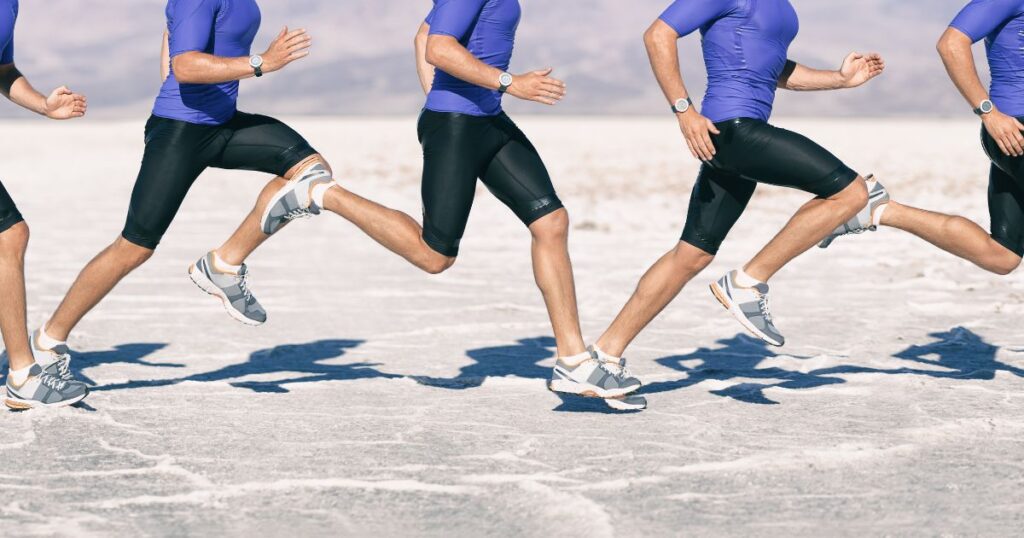The science of sports has transformed athletics and taken performance to new heights. Specifically, the field of biomechanics has provided critical insights into how the human body moves and functions during sports. By applying scientific principles, biomechanics experts have optimized techniques, designed cutting-edge gear, and shaped training methods to enhance athletic performance. Let’s explore how the science of biomechanics has revolutionized sports.
Understanding the Physics of Motion
At its core, biomechanics involves studying the physics of motion as it relates to sports and exercise. Key concepts from mechanics, such as force, torque, velocity, acceleration, momentum, and friction come into play. Biomechanics use high-speed cameras and sensors to analyze the generation of force, joint moments, movement patterns, and more in athletes.
This knowledge of kinetics and kinematics underpins the improvement of technique. It helps optimize how an athlete positions their body to exert the most force or achieve the greatest efficiency in a movement.
Leveraging Anatomy and Physiology
Biomechanics also relies heavily on understanding anatomy and human physiology as it adapts to sports. Factors like muscle strength, flexibility, cardio-respiratory endurance, and coordination are all critical to athletic performance. Experts examine which muscle groups contribute the most to particular skills. The effects of training on physiological development are measured.

This helps design programs to properly condition each system of the body. Knowledge of anatomy also facilitates injury prevention and rehabilitation. Overall, the marriage of biomechanics with anatomy and physiology provides key insights for enhancing sports performance.
Refining Sports Techniques
Applying biomechanical principles has significantly refined techniques across every sport. Motion analysis helps identify ideal execution patterns and correct flaws in an athlete’s technique. For example, studies of elite sprinters led to changes in posture, stride length, foot strike, and arm drive for faster runs.
Swimming and diving techniques have evolved based on the physics of drag, momentum, and entry angles into the water. Proper sequencing of the kinetic chain during activities like throwing and kicking has optimized force generation. Sports sciences have shaped the universal technical frameworks taught to athletes today.
Optimizing Training Methods
Biomechanics has yielded major advancements in training methods to build athleticism. Understanding exercise mechanics has allowed for more targeted training programs. Experts can pinpoint specific muscles and movements to develop based on the biomechanical demands of that sport. Knowledge of proper kinetics and kinematics helps ensure safety and effectiveness when lifting weights and performing drills.
Areas like agility, balance, and coordination are now incorporated into training for better all-around fitness. Technology like force plates and motion sensors enable easy monitoring of biomechanics to track progress. Science is key for designing training plans that translate to competitive success.

Revolutionizing Equipment and Gear
Equipment design in sports has also been heavily influenced by biomechanics research over the years. Scientists study how equipment interacts with the body and affects performance. This has led to game-changing innovations in footwear, apparel, protective gear, and more across sports.
Advances like lightweight shoes with springy soles for running, aerodynamic helmets and suits for speed skating, and swimwear with drag-reducing surfaces exemplify how biomechanics has upgraded athletic gear. The evolution of golf clubs, tennis rackets, baseball bats, and hockey sticks similarly showcases the integration of science for gains. Biomechanics will continue serving as a catalyst for cutting-edge sports equipment advancements.
Conclusion:
The science of biomechanics has clearly enhanced performance across the board in competitive sports. As technology provides more ways to collect and analyze data, biomechanics will gain greater insights into the human body and motion. This will unleash further innovation in athlete preparation, training, and equipment for the next level of achievement in sports.

Frequently Asked Questions about the Science of Sports
How has technology influenced sports biomechanics?
High-speed cameras, force plates, motion sensors, and other tools have enabled more detailed biomechanical analysis. The software also allows 3D modeling and visualization for better technique evaluation. Big data analytics are uncovering new patterns.
Which biomechanical factors are most important in running?
Key factors are stride length, stride frequency, foot strike pattern, ground reaction forces, joint moments, and ranges of motion. Factors like velocity, fatigue, and running economy are also analyzed.
What aspects of swimming has sports science improved?
Understanding drag, propulsion, buoyancy, stroke mechanics and physiology has enhanced technique, training, and equipment for swimming. Tighter swimsuits, goggles, caps, and shaving also grew from biomechanical research.
How has safety gear in sports evolved through science?
Studying impacts and anatomy has spawned advances in helmet designs, headgear, facemasks, and protective padding. Materials science has developed shock-absorbing foams and metals for gear.
What contributions has biomechanics made to athletic footwear?
Studying gait and joint kinetics led to innovations like cushioning, arch support, pronation control, and ergonomic shoe shapes. Lightweight materials and designs for power transfer during sprinting/jumping have also improved.
Can biomechanics help prevent sports injuries?
Yes, analysis of technique, overuse, and unsafe movement patterns helps identify injury risks. It also facilitates the development of training/rehab methods, equipment modifications, and rule changes to preempt injuries.




